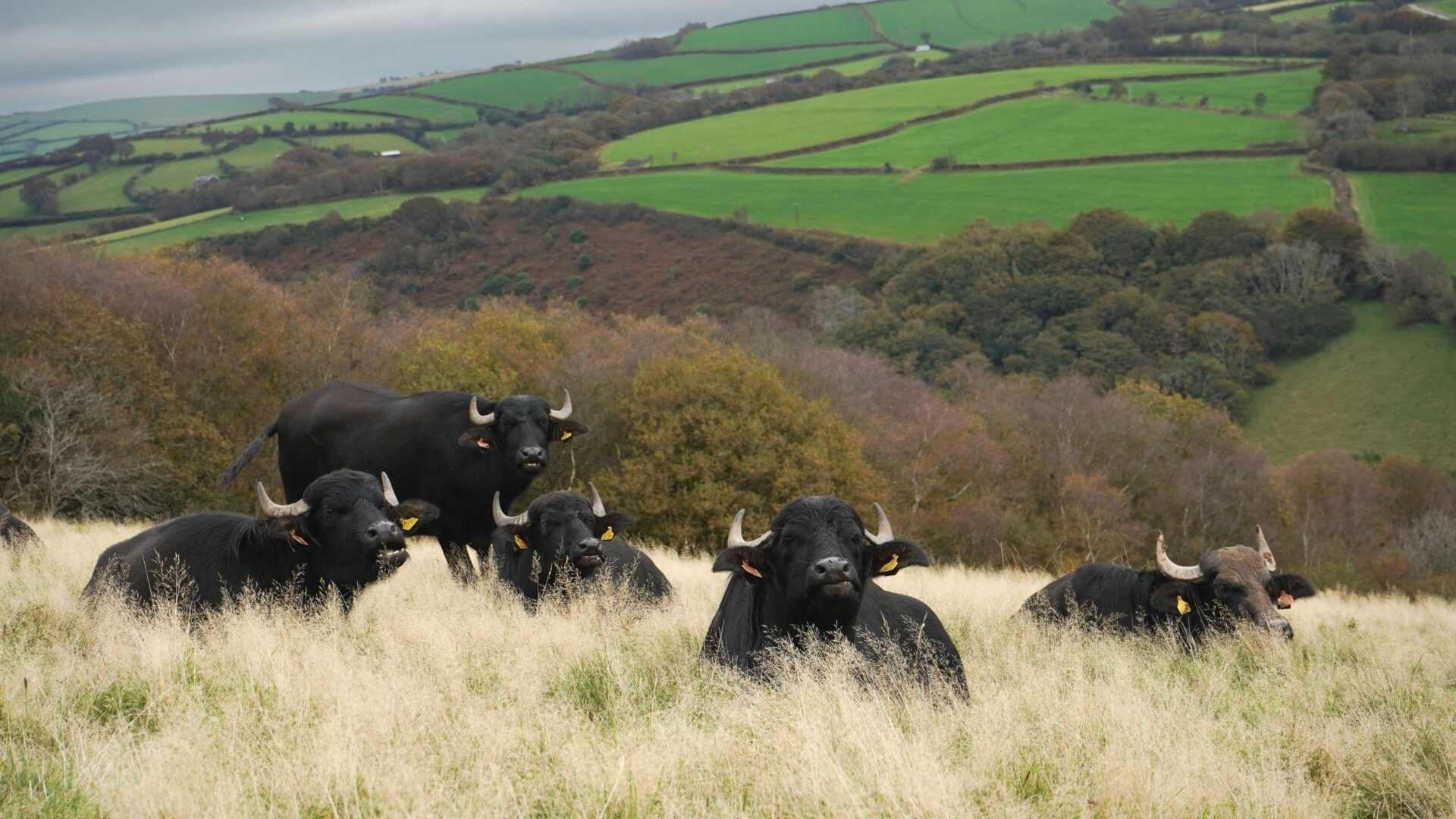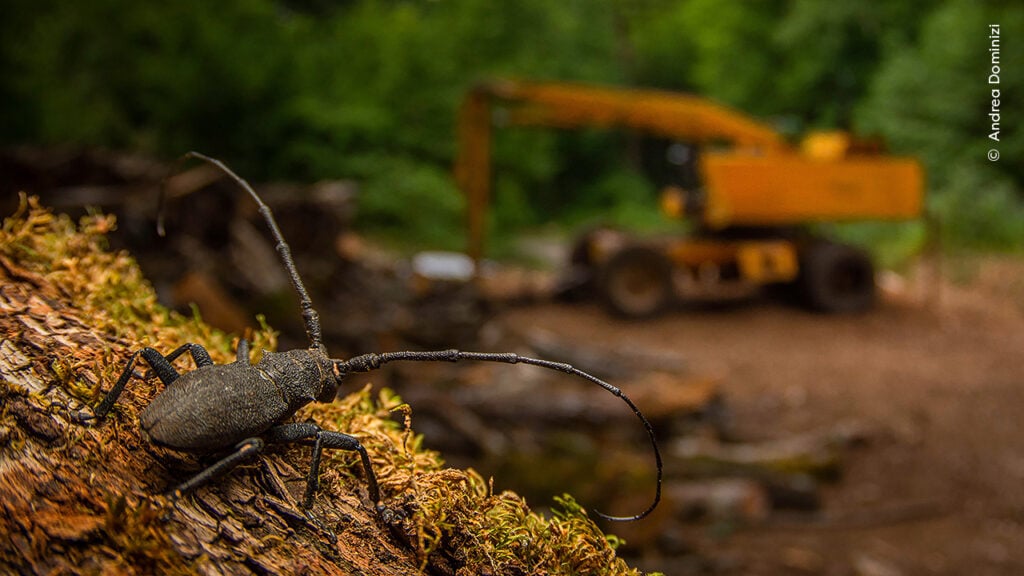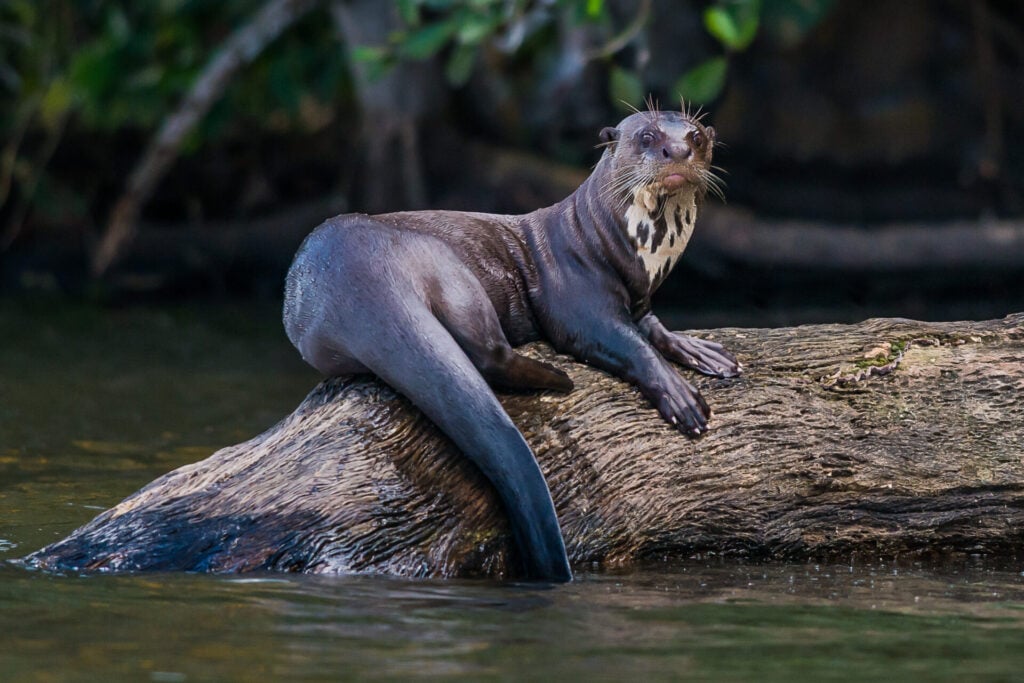Water buffalo have been introduced to moorland in the UK in a project which aims to restore agricultural land to its original state by increasing biodiversity.
According to the BBC The National Trust said six female buffalo were on a 49-hectare site at Tattiscombe which forms part of Exmoor in north Devon with the intention of turning farmland back into wild wetlands.
It said the buffalo were known as ‘wetland architects’ because they used their hooves to churn soil, dig out the earth to create spaces to wallow in and keep ponds open – slowing water flow and helping it settle naturally on the moors.
The work they did also helped the soil hold water during floods and droughts and improved the landscape’s resilience, the trust said.
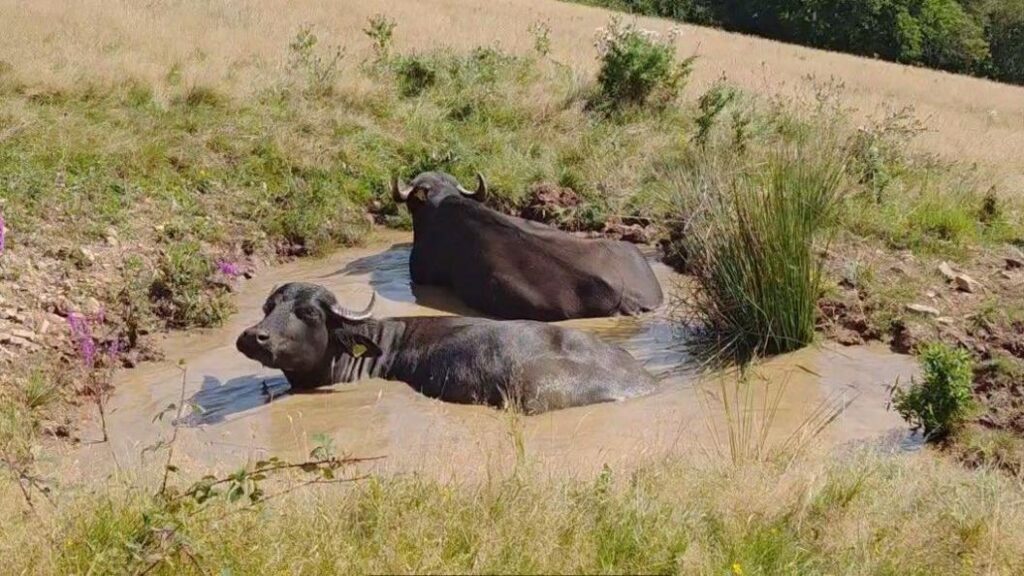
Murray Sharpe, farm manager for the West Exmoor National Trust, said: ‘Buffalo are specialised wetland animals, and this site offers an ideal habitat for them. They’re hardy, disease-resistant and able to thrive on rough forage. Their thick skin and natural wallowing habits make them more tolerant of flies and ticks than cattle, which means they’re well-suited to this landscape.
‘By grazing and browsing around the many ponds, scrapes and ditches on site, they’ll help shape a broader range of habitats than we couldn’t achieve without them. In doing so, they’ll create a wealth of new niches for wildlife and play a role in driving the ecology of the site.’
Water Buffalo Origins
Water buffalo originate from Asia but, in recent years, they have been used at various sites in the UK instead of using heavy machinery to boost biodiversity, as the mammals are hardier and more tolerant of water-logged conditions than domestic cattle and better suited to the conditions.
The area where the buffalo are located cannot be accessed by the public. It is cared for by the National Trust and includes wood pasture, grassland, hedgerows, and wetlands.
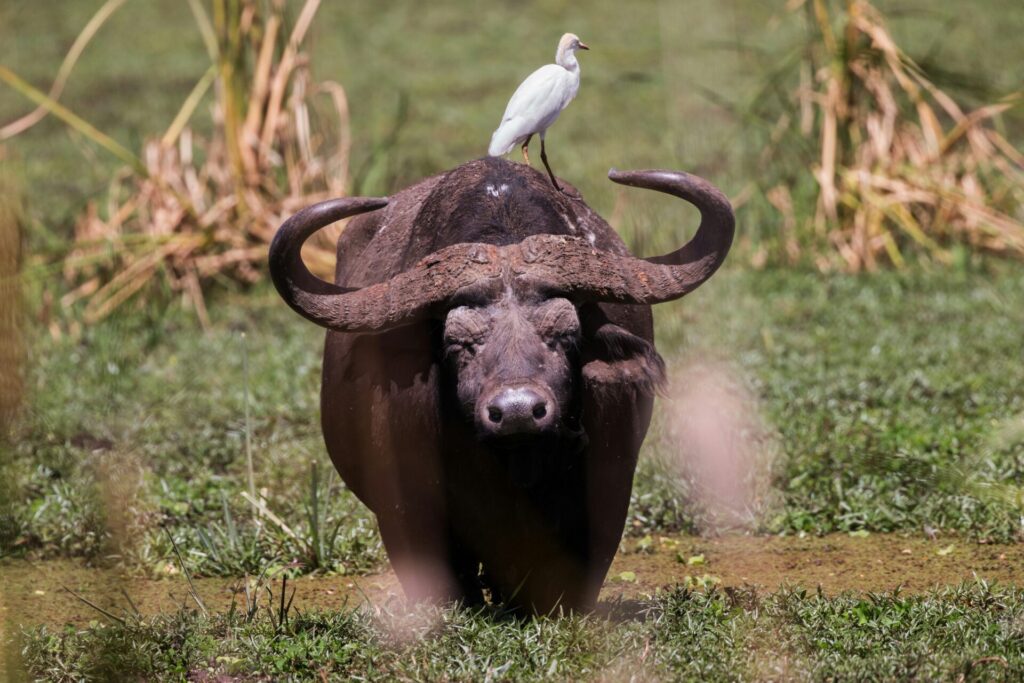
Alex Palmer, from the National Trust, said: ‘Introducing buffalo here will build on the success of the work already completed on site.
‘The buffalo are a key component to the future success for this site and we are looking forward to seeing their impact.’
Alongside the buffalo, Mangalitsa pigs are also helping to shape the landscape. Their rooting behaviour creates bare ground that supports wildflowers and insects, while slowing surface water. These disturbed patches are over-sown with wildflower seed, which the livestock help distribute naturally as they move across the site.
Other interventions carried out by rangers and volunteers include removing underground land drains, filling in old ditches to allow water to spread more widely, and creating wildlife habitat piles from hedgerow cuttings. These piles provide shelter for insects and small mammals and encourage scrub and tree growth – benefitting birds such as willow warblers and cuckoos.
As the buffalo settle into their new home, the team will continue monitoring how the landscape responds – tracking changes in water flow, plant diversity and wildlife numbers over the coming years.

